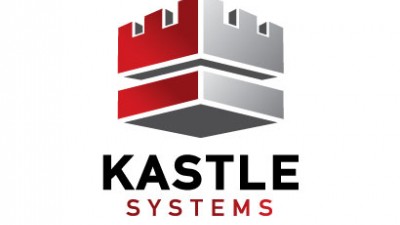Saying Goodbye to the Metal Ring of Keys

Have you ever wondered why the main entrance of your building uses electronic access control technology, but you still have to use metal keys on interior doors? It's because the complexity and cost of access control technology on secondary doors has historically outweighed the many benefits.
“These days, you have to rely upon a traditional metal key because the cost of wiring a reader and electrifying that door has been exorbitant,” Kastle Systems VP of Corporate Strategy Dave McGuinness says. “You’re talking about several thousand dollars per door, which—on a limited basis—can be acceptable, but a 30-story building with two bathrooms and two mechanical closets on each floor would find this cost-prohibitive.”
But these cost & complexity concerns are a thing of the past. Kastle Systems and Allegion have partnered to deliver a new wireless lock solution that extends the reach of your electronic access control to H.R. offices, storage closets, executive suites, restrooms, IT rooms, and any other door that could benefit from the latest in security and finest in convenience.
“The reason why it’s extended to secondary or interior doors,” Dave says, “is because people, facility managers and security personnel in particular, have recognized the convenience and security electronic access control affords.”
When asked why these kinds of locks weren’t available before, Dave notes the technology just hadn’t reached the point of being affordable, saying “the true impetus of the project was delivering advanced technology that works within existing budgets. The breakthrough is the wireless technology, centralized management, and simplified installation that rival the price point of installing the traditional, key-based cylindrical lock. With this new lineup, you get all of the benefits at a much more acceptable price point.”
Allegion’s wireless Schlage NDE locks with Engage technology, which—when paired with Kastle’s managed security service—can be installed at roughly the same cost as the traditional lock and key, while being more secure, more capable and more convenient to manage.
“A facility really has no control with traditional metal keys because these can be duplicated, passed around or lost,” Dave says. “So the breakthrough with our Allegion partnership is the arrival of the wireless lock that combines the door hardware, a reader and Bluetooth Low Energy support all within a single unit. And that unit can be centrally managed in real time.”
The locks aren’t only easy to manage (giving you the ability to change the credentials of employees on a moment’s notice), but they also let you generate reports showing the activity of each door. But the genius of it is the locks are future proof, evolving as access technology evolves. So whether it’s physical card-based keys or smartphone-based operations, you can easily upgrade because the technology is easily adjustable.
Where does door security go from here? Dave says the sky’s the limit: “The migration from a physical access card to a mobile credential is happening today and will continue to accelerate. The idea of hands-free access is the wave of the future, where you’re recognized and authenticated as you approach a secure area, without having to carry a card or present it to a reader. There’s also the idea of biometrics, whether it’s iris recognition, facial recognition, fingerprint or gait recognition.
These things are being implemented on a limited basis today, but as the technology becomes more affordable and accessible, you’ll see more of that in the work force. And let’s not forget that a mobile phone is just a form factor, so you can imagine your credentials will be embedded in wearables—anything from a ring to a bracelet to a watch —that deliver a hands-free experience and a series of location-based services that improve your day.”
To learn more about our Bisnow partner, click here.

